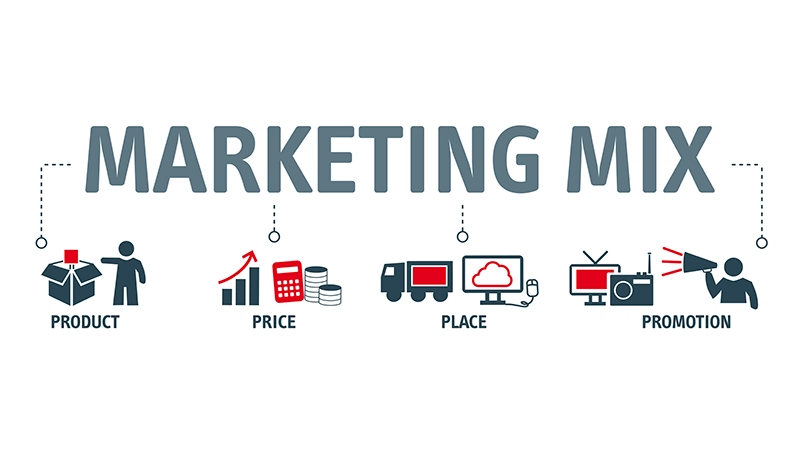The 4p marketing are the four levers on which every company must focus in order to formulate an effective marketing strategy and correctly position a product on the market. Here’s what they consist of and how to use them
The 4p’s of marketing correspond to the key elements that define marketing strategies . They were first defined by the American scholar Jerome McCarthy in 1960, who called them the 4 p’s of the marketing mix . A good marketing strategy can in fact be structured only on the basis of different variables, also called levers , which, balanced in the right way, allow you to reach your goals , intercepting the potential customer . Every business must formulate a marketing plan based on the 4p of the marketing mix. This is a fundamental marketing practice used to improve the performance of any product or service. So let’s see what 4p marketing is for and how it can be used effectively.
What are 4p marketing?
The 4 p’s of the marketing mix are:
- product (product)
- price (the price)
- place (point of sale and distribution channels)
- promotion (promotion, advertising, public relations).
The marketing management sector , in coordination with the corporate communication sector , works to balance these four variables in the best possible way, in order to position the brand or product on the market or to launch new products . It is a constant work , as several things change over time: the life cycle of the product , the propensity to purchase of users, markets , competition , consumer habits. Having this scheme as a reference therefore helps to orient oneself in this complexity.
The first p of marketing: the product
Each marketing strategy starts from defining the product based on the interests and needs of existing and potential customers . To put this procedure into practice, you must first start a market analysis that allows you to understand its risks and opportunities . Secondly, we move on to evaluate the concrete and symbolic content of the product, knowing full well that every object and every brand brings with it a story, a reference “world” that must be carefully constructed and developed over time. The product must therefore on the one hand intercept the needson the market (or create new ones). On the other hand, it expresses the founding values that distinguish the company from all the others.
4p marketing: the price
How is the price of a product determined? Also in this case, several elements must be taken into consideration. The costs necessary to produce and distribute it , the prices that the competition makes , the phase of the product’s life cycle as well as the performance of the economy in a given period. But not only. The value of a brand also counts : two products in the same category can have a very different price. The definition of the price is a very accurate step because if a low price can incentivize sales, it could also act as a deterrent by making the product perceive as a good ofpoor value . In short, it depends on the individual case , even if, with the exception of luxury brands, it is still advisable to stay within an intermediate range.
Sale and distribution (place)
Now, when we talk about “place” we inevitably refer to both physical and virtual places . It is therefore a question of evaluating the different sales channels and contact points in both contexts: single single-brand store or large distribution, website with e-commerce or sales through a large portal such as Amazon . Not only. Methods such as franchising or piggybacks can also be considered . Depending on the channel chosen, it will be possible to intercept a different audience. Some types of products perform better in contexts that allow you to reach large numbersof people, others in narrower, niche channels , able to provide added value and perhaps a more attentive and personalized service . Closely related to sales is then the issue of distribution and logistics . Here too, especially if we are talking about online sales , several evaluations need to be made. You can rely on a third party or manage storage and shipments on your own.
Promotion (promotion and communication)
After placing the product on the market, it is necessary to establish a promotion and communication strategy to make it known. Not only. In this phase the brand image is built , the way in which a product and a company are perceived by customers . Today the tools offered by digital marketing are mainly used : email marketing , social media marketing , content marketing , influencer marketing and so on. It is essential to structure an accurate presence of the brand on the web through the website, newsletter , social profiles . At the same time, especially for some sectors and products, a traditional marketing activity is also worth considering . We are therefore talking about press office , advertising on radio and television, sponsorships, catalogs, realization of events in the presence, participation in trade fairs and congresses of the sector.
4p marketing + one
The 4p marketing model, which as we saw at the beginning was introduced several decades ago, is still valid today , but must be updated not only by focusing on digital, but above all by orienting it to a fifth dimension, a fifth p : people . From product to price, from distribution to promotion, it is increasingly important to strive to take the customer ‘s point of view , making sure to offer an excellent user experience . The user experience must be taken care of at every stage of the customer journey , also observing how customer trends and needs change and evolve over time.



